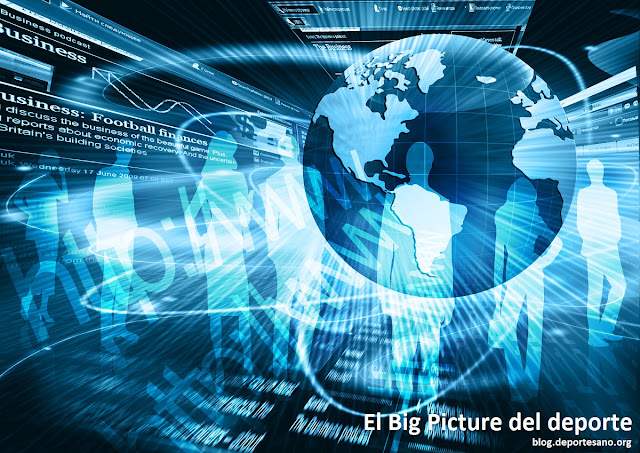What are the biggest drivers for any brand? To name a few: Reach. Immersion. Impact. What keeps professional sports leagues buoyant and profitable is access—as lucrative media rights deals have skyrocketed, more notably, player salaries have followed suit. Since the advent of television, major sports media rights have a handful of bidders—national networks and regional sports networks—the only suitors with the capacity to distribute so widely. But the game is changing.
The digital revolution is attracting new entrants into this exclusive competitive space: these include the FAANGs (Facebook, Amazon, Apple, Netflix, Google) and both A’s are the only publicly-traded companies that have exceeded one trillion dollars in market capitalization.
Our Sports Outlook looks at revenue projections through 2022. That’s a big year for TV rights, as broadcast contracts for the NFL and MLS both expire after that season. The NHL’s contract expires a year beforehand and the NBA in 2025. While no one can predict what will happen, we focus on some market dynamics to build a framework of how we think the game will change. When we think of a brand’s content ecosystem—actual program, brand website, video streams, social media feeds (Twitter, Facebook, Instagram)—the brand has a 24/7/365 opportunity to connect.
While a game takes three hours to complete, brands want to harness the whole clock, which is where disruptive forces feast.
Some of the key points in the future of sports media rights are:
The change of the change
- What’s changing isn’t merely the introduction of digital platforms, it’s how audiences consume their entertainment—a two-screen experience is now commonplace.
- Technology and viewing behavior are disruptive forces, putting pressure on sports rights holders to create new fan experiences around media rights.
- Smartphones and social media platforms are challenging the status quo; Twitter and Amazon have already completed one-year $10 million and $50 million deals, respectively, with the NFL for non-exclusive US rights to stream live Thursday Night games.
- Amazon and the NFL re-upped for two additional seasons at $130 million, giving Amazon’s Prime Video subscribers additional content. Facebook’s deal with the MLB to broadcast 25 weekday afternoon games is noteworthy because it negotiated exclusive streaming rights. How will the competitive landscape look five years from now?
Evolving business model
- Developments created a new need for content, and the modern TV bundle was born. A defining moment for the cable industry came in 1992 when government regulation allowed broadcasters to charge distributors to carry their signals.
- Today, it’s these carriage fees for individual channels that are driving bundle costs up, thereby creating a significant and growing market for a la carte consumption.
- Multichannel Video Programming Distributors (MVPDs) such as Comcast, AT&T and DirecTV have owned the content and distribution game, but the link between those two pieces is getting ripped apart.
- The slow decline of subscription-based models has been accompanied by a revolution in content streaming. People want to be in control of their content and enjoy it on their terms.
- The Video On Demand model is relatively straightforward when it comes to long-form or pre-produced programming however the live element introduces exciting wrinkles and possibilities.
- There is simply no replacement for consuming content as it is happening. While news outlets have relatively equal access to the people and places making the news, for live sports, it is predetermined where all the eyes go based on negotiated media rights.
- The future of consumer demand for live sports and the cable bundle appear to be going in opposite directions. This upcoming wave of major sports broadcasting contracts could suture the wound or perhaps break the bundle’s back.
A different game
- While owning rights to broadcast games sounds straightforward, there are wrinkles. The NFL RedZone is a fascinating story of giving consumers what they want. This channel, only shown on Sundays during the early and late games, bounces from game-to-game (CBS and FOX televised games), showing every touchdown from every game, commercial-free.
- This speaks more to statscrazy Fantasy Football fans than fans who want to watch a game unfold. The channel’s experience is bombarding and frenetic, but genius. Available on most providers’ platforms, this season it is available for the first time as a stand-alone streaming service at $5 per month. What’s at play here?
- Fans are paying for the opportunity NOT to watch an actual game, instead watching live moments from multiple games unfold simultaneously. At a time when many care more about their fantasy teams than their favorite teams, media rights bidders need to take notice.
- Another factor in the changing business model of live sports television is the recent deregulation of sports gambling. Live sports are already at the core of American culture—increasing the supply of sports betting will further increase the demand for live sports. Earlier in this Sports Outlook we analyzed the impact of the legalization of sports betting on the sports landscape.
References:
PwC, PwC Sports Outlook (October 2018), At the gate and beyond, Outlook for the sports market in North America through 2022, October 2018, link: https://www.pwc.com/us/en/industries/tmt/library/sports-outlook-north-america.html.

No hay comentarios.:
Publicar un comentario
Bienvenidos todos los comentarios respetuosos.